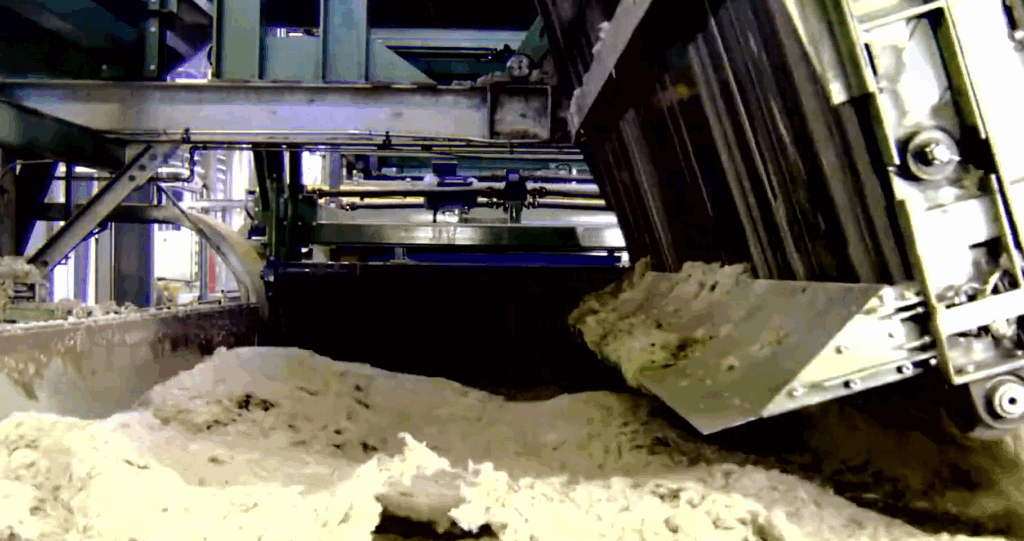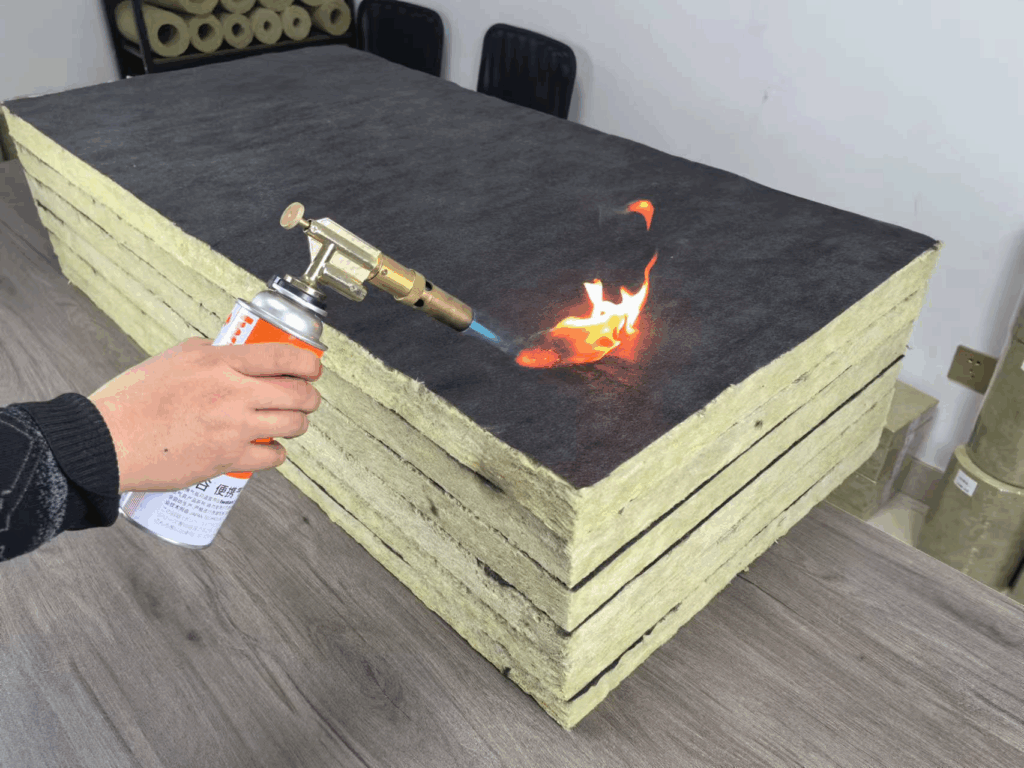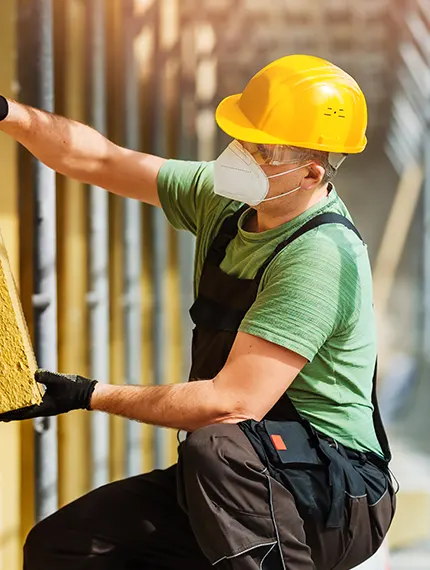올바른 단열재를 선택하는 것은 단순히 재료를 선택하는 것 이상으로 안전에 관한 것입니다., 편안, 그리고 장기적인 효율성. 스톤울과 미네랄울 단열재는 종종 성능에 대해 논쟁을 벌입니다. 가정용 애플리케이션 상업 프로젝트. 두 재료 모두 뛰어난 열적, 음향적 이점을 제공하지만, 미묘한 차이로 인해 특정 요구 사항에 더 적합해질 수 있습니다.
이 가이드에서는, 우리는 그들의 속성을 분석할 것입니다, 장점, 단점, 정보에 입각한 선택을 하는 데 도움이 되는 실질적인 고려 사항.
| 특징 | 스톤 울 (바위 울) | 미네랄 울 (일반 카테고리) |
| 원료 | 현무암 같은 화산암으로 만들어짐 | 암면 및 슬래그 울 포함 (부산물) |
| 내화성 | 매우 높음 (>1,000℃), 뛰어난 안전성 | 내화성, 하지만 종류에 따라 다르죠 |
| 열효율 | 높은 R 값, 극한의 온도에서도 매우 안정적 | 좋은 단열, 스톤 울보다 약간 적음 |
| 방음 | 더 높은 밀도로 인해 우수함 | 효과적인, 하지만 돌양모만큼 강하지는 않아요 |
| 비용 | 더 비싸다, 프리미엄 소재 | 더 저렴한, 특히 슬래그 울 혼방 |
| 최고의 사용 사례 | 산업용, 고층, 화재 등급 프로젝트 | 주거용 및 일반 상업용 애플리케이션 |
미네랄 울은 무엇입니까??

미네랄울을 스톤울과 비교하기 전, 미네랄울이 무엇으로 만들어졌는지 이해하는 것이 필수입니다..
- 구성
미네랄울은 현무암이나 규암 등의 천연 암석과 고로 슬래그 등의 산업 부산물에서 생성됩니다..
재료는 매우 높은 온도에서 녹아 미세한 섬유로 방사됩니다.. 이 섬유는 보드로 압축됩니다., 배트, 또는 헐렁하게 채워지는 단열재.
- 미네랄울 제조업체의 역할
신뢰할 수 있는 미네랄 울 제조업체 일관된 섬유 밀도 보장, 열효율, 및 내화성.
- 변형
미네랄울은 암면과 암면을 모두 포함합니다. (화산암에서) 그리고 슬래그 울 (용광로 부산물에서), 각각 약간 다른 성능 특성을 가지고 있습니다..
미네랄울 단열재의 장점

미네랄울은 건설 프로젝트에 최고의 선택이 되는 여러 가지 강력한 이점을 가지고 있습니다.:
- 내화성 – 자연적으로 불연성이며 독성 연기를 방출하지 않고 고온을 견딜 수 있습니다..
- 방음 – 조밀한 섬유가 음파를 흡수함, 벽에 이상적으로 만들기, 바닥, 소음 감소가 중요한 천장 및.
- 단열재 – 안정적인 온도 조절 제공, 더운 기후와 추운 기후 모두에서 에너지 비용을 절감하는 데 도움이 됩니다..
- 내구성 – 해충에 강함, 곰팡이, 그리고 부패, 까다로운 조건에서도 장기적인 성능 보장.
- 환경적 이점 – 종종 재활용 재료가 포함되어 있습니다., 다른 단열재 유형에 비해 탄소 배출량 감소.
미네랄 울의 단점은 무엇입니까?
장점에도 불구하고, 미네랄울 단열재에는 몇 가지 제한 사항이 있습니다.:
- 비용 – 일반적으로 유리섬유보다 가격이 더 비쌉니다., 초기 설치 비용이 더 많이 들게 됩니다..
- 무게 – 유리섬유보다 밀도가 높습니다., 이는 취급 및 설치를 더욱 노동 집약적으로 만들 수 있습니다..
- 피부 및 눈 자극 – 섬유질은 접촉시 가려움증이나 발진을 일으킬 수 있습니다.; 보호 장비를 권장합니다.
- 환경에 미치는 영향 – 고온 제조에는 상당한 에너지가 소비됩니다., 환경 문제에 기여.
- 제한된 수분 내성 – 곰팡이에 강하지만, 과도한 물 노출은 단열 효과를 일시적으로 감소시킬 수 있습니다..
미네랄울이 젖으면 어떻게 되나요??

수분은 단열 효율에 영향을 미칠 수 있습니다., 따라서 행동을 이해하는 것이 중요합니다:
- 방수 – 미네랄울은 어느 정도 물을 밀어냅니다., 그러나 포화는 열 성능을 저하시킬 수 있습니다..
- 건조 및 회수 – 제대로 건조된 후, 대부분의 절연 특성을 회복합니다..
- 곰팡이 저항 – 유기단열재와는 다르게, 곰팡이가 번식할 수 있는 환경을 제공하지 않습니다., 젖어도.
- 설치 팁 – 습기가 많은 곳에서는 수증기 차단재나 방수재를 사용하십시오., 지하실이나 외벽 등.
미네랄 울과 유리 섬유: 어느 것이 더 나은가?

스톤 울과 미네랄 울: 주요 차이점
암면은 기술적으로 미네랄 울의 일종이지만, 주목할 만한 차이점이 있습니다:
- 스톤 울 – 현무암과 같은 화산암으로 만들어짐; 더 조밀한, 더 내화성, 그리고 방음에도 탁월합니다.
- 미네랄 울 – 암면 및 슬래그 울을 포함한 더 넓은 범주; 약간 더 가벼움, 변하기 쉬운, 그리고 비용 효율적.
- 성능 고려 사항 – 최대의 화재 및 소음 방지를 위해, 스톤 울이 우수합니다; 일반 절연 요구 사항에 대해, 다른 종류의 미네랄울로도 충분합니다.
많은 주택 소유자와 건축업자가 다음과 같은 질문을 합니다. 미네랄 울 단열재 또는 유리 섬유가 우수합니다:
- 열효율 – 미네랄울은 인치당 R값이 더 높은 경우가 많습니다., 더 나은 단열 제공.
- 화재 성능 – 미네랄울은 유리섬유보다 더 높은 온도를 견딜 수 있습니다., 우수한 화재 예방 제공.
- 음향 특성 – 밀도가 높은 미네랄울 섬유는 유리섬유 배트보다 소음을 더 잘 줄여줍니다..
- 비용과 용이성 – 유리섬유는 가격이 저렴하고 절단 및 설치가 더 쉽습니다..
미네랄 울은 화재 안전 및 방음이 필요한 고성능 응용 분야에 이상적입니다., 유리섬유는 설치 용이성이 중요한 예산에 민감한 프로젝트에 적합합니다..
미네랄울을 만지면 어떻게 되나요??
미네랄울은 섬유질로 인해 취급 시 주의가 필요합니다.:
- 피부 자극 – 가려움증이나 경미한 발진이 발생할 수 있습니다.; 장갑과 긴 소매를 권장합니다.
- 눈 자극 – 느슨한 섬유는 공기 중에 있으면 눈을 자극할 수 있습니다.; 안전 고글은 노출을 방지하는 데 도움이 됩니다..
- 호흡기 보호 – 먼지를 흡입하면 기침이나 목 자극을 유발할 수 있습니다.; 절단이나 설치 시 마스크를 착용하세요.
- 안전한 취급 요령 – 위험을 최소화하려면 미네랄울 제조업체가 제공하는 제조업체 지침을 항상 따르십시오..
결론
스톤울과 미네랄울을 비교할 때, 더 나은 옵션은 귀하의 필요에 따라 다릅니다. 스톤울은 내화성 및 방음성 측면에서 우수한 성능을 제공합니다., 반면 미네랄 울은 일반적으로 다용도성을 제공합니다., 믿을 수 있는 솔루션.
재료를 조달하는 경우, 항상 평판이 좋은 미네랄울 제조업체에 문의하여 제품 품질을 확인하세요.. 장기적인 성능을 위해, 적절한 설치와 습기 보호는 단열재 선택만큼 중요합니다..
권리를 찾으세요 암면, 유리솜과 세라믹 섬유 단열재 당신의 프로젝트를 위해. 표준 제품 또는 맞춤형 단열 솔루션이 필요한지 여부, RPower는 안정적인 품질로 귀하를 지원할 준비가되었습니다, 빠른 배달, 그리고 전문 서비스. 놓치지 마세요!

















